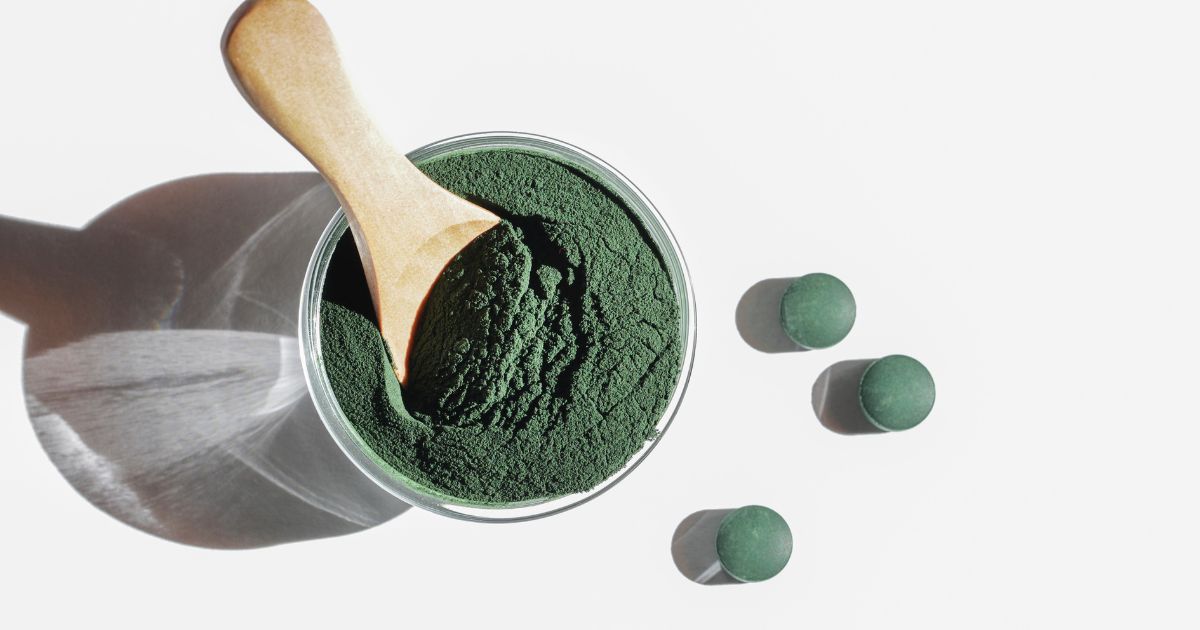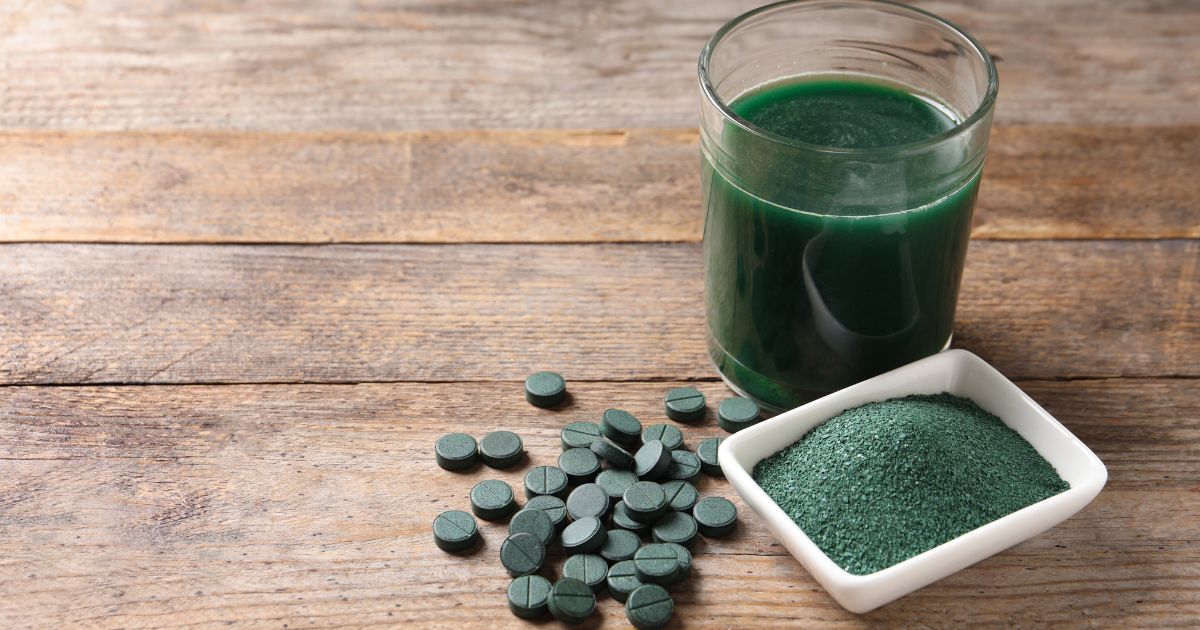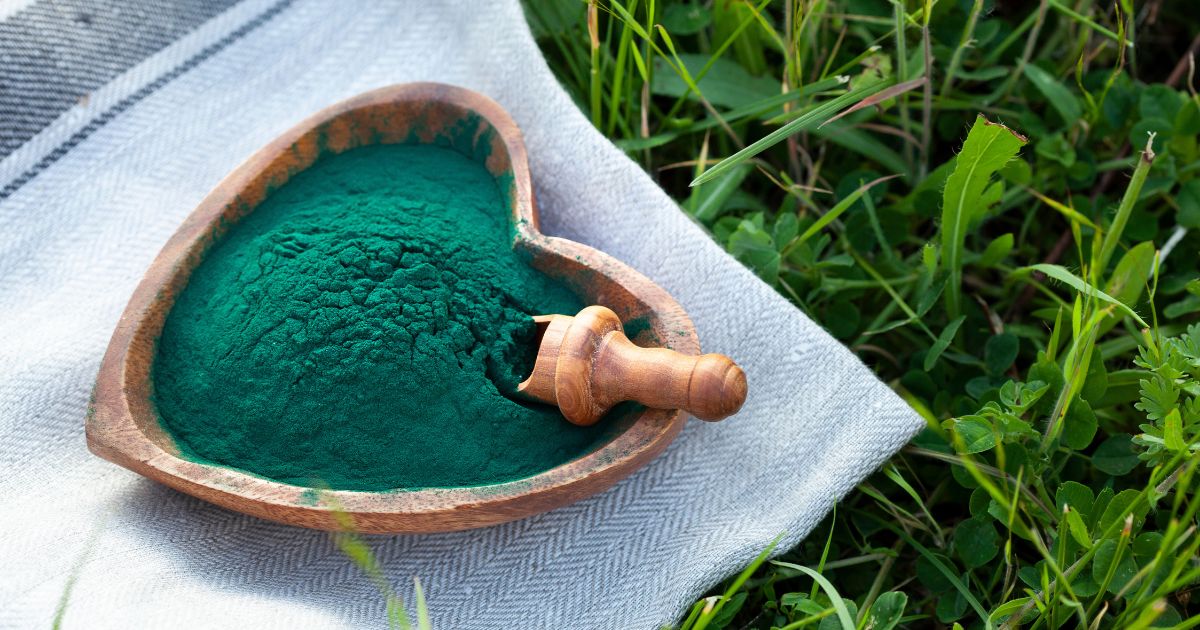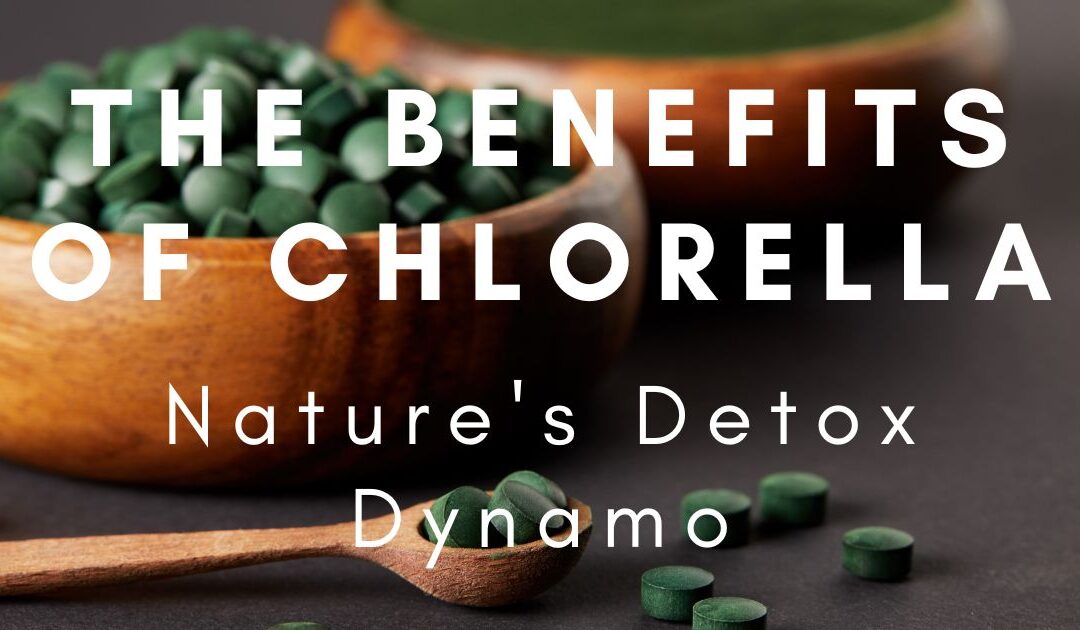The World Of Superfoods: Unveiling Chlorella

In the vibrant world of superfoods, chlorella stands out for its exceptional nutritional prowess. For a microscopic green algae that’s often overshadowed by its more popular counterparts, like spirulina or kale, it certainly packs a remarkable punch of nutrients.
So, what makes chlorella a marvel of the natural world? From its origins and remarkable nutrient profile to its versatile applications and potential to enhance your health, this is your guide to all things chlorella.
What Is Chlorella?
The History Of Chlorella
Chlorella is a single-celled, freshwater microalgae.
With its vibrant green hue, chlorella is often considered one of the most nutritionally dense foods on the planet. This incredible microorganism is packed with a wide array of essential nutrients and health-promoting compounds, which is why it’s earned the esteemed title as a “superfood.”
Chlorella’s origins can be found in Earth’s ancient oceans, where it thrived as one of the earliest life forms on the planet. In fact, chlorella-like organisms have existed for over 2.5 billion years, utilizing photosynthesis to convert sunlight into energy. This process allowed chlorella to produce oxygen.1
However, chlorella remained largely unknown until the late 19th and early 20th centuries. In 1890, German biologist Dr. Martinus Willem Beijerinck isolated chlorella as a distinct genus. However, it wasn’t until the mid-20th century that chlorella gained substantial attention for its nutritional potential.2
In the 1950s and 1960s, Dr. Melvin Calvin, a Nobel laureate in chemistry, played a pivotal role in studying chlorella’s photosynthetic process, further contributing to a clearer understanding of its nutritional value.3
Eventually, chlorella would be incorporated into various space missions as both a nutritional food source and a provider of oxygen (due to its ability to convert carbon dioxide to oxygen).4
Today, chlorella has firmly established itself as a superfood, recognized for its outstanding nutritional composition and numerous potential health benefits, making it a valuable addition to a healthy diet.

Remarkable Potential Health Benefits Of Chlorella
Chlorella is celebrated for a diverse range of potential health benefits which stem from its truly remarkable composition. Let’s take a look at some of the key health benefits potentially associated with the consumption of chlorella.
Nutrient Density
There’s no two ways about it – chlorella is nutritionally dense.
Three tablets of chlorella are loaded up with 2 grams of protein, 130% DV (recommended daily amount) of vitamin C, 60% DV of vitamin A, and 35% DV of iron – more than most other plant-derived foods.5
Chlorella also provides small amounts of magnesium, zinc, copper, potassium, calcium, folate, and other B vitamins, as well as omega-3 fatty acids.6,7
Adding to its “superfood” status is the fact that chlorella is over 50% “complete” protein. Complete proteins are usually meat (or soy) products, and they contain all nine essential amino acids.8
Antioxidant Properties
Chlorella is extremely rich in antioxidants, such as chlorophyll, carotenoids, like beta-carotene, lycopene, and lutein, and a whole lot of vitamin C.9
Antioxidants are powerful compounds that support your body’s natural defense against free radicals.10
Immune Support
Chlorella may help support the immune system.
Several studies have shown an increase in cytokines with the use of chlorella. Cytokines are key to supporting a healthy immune response.11,12
Anti-Aging Support
The antioxidants and nutrients in chlorella may also help to promote healthier, more radiant-looking skin by supporting your body’s natural defense against free radicals – which can hasten the aging process.13,14
Blood Sugar Levels
Some clinical research has shown that taking chlorella may help support healthy blood sugar levels already within a normal range . For example, in one study, subjects who took chlorella for 12 weeks saw a marked decrease in fasting blood sugar levels.15
Cardiovascular Health
Chlorella’s potential to help support healthy cholesterol and blood pressure levels may, in turn, help support overall heart health.
In one study, 4g of chlorella was given daily for 12 weeks to a group of people with high-normal blood pressure. The results? The group ended up with lower blood pressure readings than those who took a placebo.16
Another study saw a marked difference in stiffness of the arteries (which affects blood pressure) in healthy subjects who took chlorella supplements. Researchers determined that this could be due to the rich content of antioxidant vitamins, arginine, potassium, calcium, and omega fatty acids in chlorella.17
Athletic Performance
We saw how chlorella has proven useful for oxygen in space. Well, it may also prove useful for aerobic endurance in athletes and fitness enthusiasts.
In one study, a mix of young men and women in their early 20s took either a placebo or chlorella tablets for 4 weeks. Peak oxygen uptake significantly increased after taking chlorella, but not with the placebo.18
Chlorella vs. Spirulina
Chlorella and spirulina are similar, but not the same. Both are water-growing, nutrient-rich algae, and, ultimately, they do complement each other in the superfood universe.
Chlorella And Spirulina: Differences And Similarities
Chlorella and spirulina are often mentioned in the same breath due to their similar origins, characteristics, and status as green superfoods. They also share many of the same potential health benefits. You can read more about the benefits of spirulina here.
However, there are some distinct similarities and differences between the two.
Similarities
Nutrient Powerhouses: Both chlorella and spirulina are incredibly nutrient-dense. They’re rich sources of essential vitamins, minerals, protein, and antioxidants, making them valuable additions to a healthy diet.
Complete Proteins: Both algae contain essential amino acids, making them excellent protein sources, especially for vegetarians and vegans.
Chlorophyll Content: Both chlorella and spirulina owe their green color to chlorophyll, a natural pigment with antioxidant health benefits.19,20
Differences
- Taxonomy: Chlorella and spirulina belong to different categories of living species. Chlorella is a single-celled, green algae, while spirulina is a cyanobacteria, or blue-green algae. They’re biologically different.
- Cell Wall: Chlorella has a tough, indigestible cell wall made of cellulose. This wall can be broken down mechanically or chemically to enhance digestibility. Spirulina, on the other hand, has a more easily digestible cell wall.
- Taste and Smell: Spirulina generally has a slightly milder taste and odor.
- Cultivation: Chlorella is typically cultivated in freshwater environments, while spirulina can thrive in both freshwater and saltwater bodies.
- Color: Spirulina typically has a bluish-green color, while chlorella is a bright, deep green.21, 22
Incorporating Chlorella Into Your Diet
Maximize Your Chlorella Intake
Chlorella is sold as a supplement in powder, tablet, or capsule form, making it simple to introduce it into your daily routine.
Now, if you choose the powdered form, you can have some fun with it and get a big nutrient hit. Here are some ideas:
- Transform smoothies into a vibrant green delight
- Add it to yogurt, water, or juice
- Stir a dash into vinaigrette-based dressings
- Let it disappear right into miso soup
- Sprinkle it over a stir-fry
- Add it to homemade power bars
- Or, bake it into savory muffins or pancakes. Cooking chlorella does not diminish its nutritional value. 23
You could even add it to a skin-soothing facemask.

Closing Thoughts
Chlorella: A Secret Ingredient For A Healthier You
Chlorella offers a range of potential benefits, not the least being a nutrient-dense source of essential vitamins, minerals, and plant-based protein. It’s known for its high chlorophyll content and its ability to support the immune system.
However, it’s important to approach superfoods with a balanced perspective, understanding that a diverse and well-rounded diet is always the most essential thing for overall health. As with any dietary change or supplement, it’s always best to consult with a healthcare professional for personalized guidance.
Sources
- https://www.tandfonline.com/doi/full/10.1080/26388081.2020.1715256
- https://www.tandfonline.com/doi/full/10.1080/26388081.2020.1715256
- https://www.britannica.com/biography/Melvin-Calvin
- https://www.frontiersin.org/articles/10.3389/fspas.2021.700579/full
- https://fdc.nal.usda.gov/fdc-app.html#/food-details/580776/nutrients
- https://www.ncbi.nlm.nih.gov/pmc/articles/PMC7551956/
- https://pubmed.ncbi.nlm.nih.gov/35581315/
- https://www.ncbi.nlm.nih.gov/pmc/articles/PMC10181138/
- https://www.ncbi.nlm.nih.gov/pmc/articles/PMC3131561/
- https://www.ncbi.nlm.nih.gov/pmc/articles/PMC3131561/
- https://pubmed.ncbi.nlm.nih.gov/22849818/
- https://pubmed.ncbi.nlm.nih.gov/21906314/
- https://www.ncbi.nlm.nih.gov/pmc/articles/PMC7344841/
- https://www.ncbi.nlm.nih.gov/pmc/articles/PMC7344841/
- https://pubmed.ncbi.nlm.nih.gov/18800884/
- https://pubmed.ncbi.nlm.nih.gov/19811362/
- https://pubmed.ncbi.nlm.nih.gov/24249971/
- https://pubmed.ncbi.nlm.nih.gov/25320462/
- https://www.healthline.com/nutrition/chlorella-spirulina#differences
- https://pubmed.ncbi.nlm.nih.gov/18831369/
- https://wcwc.ca/wp-content/uploads/2020/12/Algae-identification-lab-guide.pdf
- https://www.ncbi.nlm.nih.gov/pmc/articles/PMC8937016/
- https://www.sciencedirect.com/science/article/abs/pii/S221192642200087X

